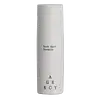What's inside
What's inside
 Key Ingredients
Key Ingredients

 Benefits
Benefits

 Concerns
Concerns

 Ingredients Side-by-side
Ingredients Side-by-side

Hydroquinone 4%
StabilisingKojic Acid 4%
AntioxidantAzelaic Acid 3%
BufferingResveratrol
AntioxidantWater
Skin ConditioningCetearyl Alcohol
EmollientPolysorbate 60
EmulsifyingIsohexadecane
EmollientIsododecane
EmollientC13-15 Alkane
SolventGlyceryl Stearate
EmollientPEG-75 Stearate
Polyacrylate-13
Polyisobutene
Polysorbate 20
EmulsifyingPolyurethane-39
Stearyl Behenate
EmollientCetyl Alcohol
EmollientTocopheryl Acetate
AntioxidantAscorbic Acid
AntioxidantSodium Bisulfite
AntioxidantBenzoic Acid 0.09%
MaskingSorbic Acid 0.09%
PreservativeBHT
AntioxidantPropanediol
SolventHydroquinone 4%, Kojic Acid 4%, Azelaic Acid 3%, Resveratrol, Water, Cetearyl Alcohol, Polysorbate 60, Isohexadecane, Isododecane, C13-15 Alkane, Glyceryl Stearate, PEG-75 Stearate, Polyacrylate-13, Polyisobutene, Polysorbate 20, Polyurethane-39, Stearyl Behenate, Cetyl Alcohol, Tocopheryl Acetate, Ascorbic Acid, Sodium Bisulfite, Benzoic Acid 0.09%, Sorbic Acid 0.09%, BHT, Propanediol
Hydroquinone 12%
StabilisingNiacinamide 2%
SmoothingHydrocortisone 1%
Glycerin
HumectantAlcohol Denat.
AntimicrobialSodium Bisulfate
BufferingBHT
AntioxidantAcrylates/C12-22 Alkyl Methacrylate Copolymer
Aluminum Starch Octenylsuccinate
AbsorbentBis-Vinyldimethicone/Bis-Isobutyl PPG-20 Crosspolymer
EmollientCaprylic/Capric Triglyceride
MaskingCarthamus Tinctorius Seed Oil
MaskingCeteth-20
CleansingCetyl Alcohol
EmollientCyclohexasiloxane
EmollientCyclopentasiloxane
EmollientDicaprylyl Ether
EmollientDimethicone
EmollientDimethyl Isosorbide
SolventDisteardimonium Hectorite
StabilisingGlyceryl Stearate
EmollientIsodecyl Neopentanoate
EmollientIsododecane
EmollientIsopropyl Palmitate
EmollientLaureth-12
EmulsifyingLecithin
EmollientOzokerite
Emulsion StabilisingPEG-75 Stearate
Petrolatum
EmollientPolysilicone-11
Potassium Sorbate
PreservativePropylene Carbonate
SolventSilica
AbrasiveSilica Silylate
EmollientSodium Lauryl Sulfoacetate
CleansingSorbic Acid
PreservativeSteareth-20
CleansingTitanium Dioxide
Cosmetic ColorantTriethoxycaprylylsilane
Hydroquinone 12%, Niacinamide 2%, Hydrocortisone 1%, Glycerin, Alcohol Denat., Sodium Bisulfate, BHT, Acrylates/C12-22 Alkyl Methacrylate Copolymer, Aluminum Starch Octenylsuccinate, Bis-Vinyldimethicone/Bis-Isobutyl PPG-20 Crosspolymer, Caprylic/Capric Triglyceride, Carthamus Tinctorius Seed Oil, Ceteth-20, Cetyl Alcohol, Cyclohexasiloxane, Cyclopentasiloxane, Dicaprylyl Ether, Dimethicone, Dimethyl Isosorbide, Disteardimonium Hectorite, Glyceryl Stearate, Isodecyl Neopentanoate, Isododecane, Isopropyl Palmitate, Laureth-12, Lecithin, Ozokerite, PEG-75 Stearate, Petrolatum, Polysilicone-11, Potassium Sorbate, Propylene Carbonate, Silica, Silica Silylate, Sodium Lauryl Sulfoacetate, Sorbic Acid, Steareth-20, Titanium Dioxide, Triethoxycaprylylsilane
 Reviews
Reviews

Alternatives
Ingredients Explained
These ingredients are found in both products.
Ingredients higher up in an ingredient list are typically present in a larger amount.
BHT is a synthetic antioxidant and preservative.
As an antioxidant, it helps your body fight off free-radicals. Free-radicals are molecules that may damage your skin cells.
As a preservative, it is used to stabilize products and prevent them from degrading. Specifically, BHT prevents degradation from oxidation.
The concerns related to BHT come from oral studies; this ingredient is currently allowed for use by both the FDA and EU.
However, it was recently restricted for use in the UK as of April 2024.
Learn more about BHTCetyl Alcohol is a fatty alcohol. Fatty Alcohols are most often used as an emollient or to thicken a product.
Its main roles are:
Though it has "alcohol" in the name, it is not related to denatured alcohol or ethyl alcohol.
The FDA allows products labeled "alcohol-free" to have fatty alcohols.
Learn more about Cetyl AlcoholGlyceryl Stearate is a mix of glycerin and stearic acid.
It is used to stabilize the mixing of water and oil ingredients. By preventing these ingredients from separating, it can help elongate shelf life. It can also help thicken the product's texture.
As an emollient, it helps soften skin and supports barrier-replenishing ingredients.
In cosmetics, Glyceryl Stearate is often made from vegetable oils or synthetically produced.
This ingredient may not be fungal-acne safe
Fun fact: The human body also creates Glyceryl Stearate naturally.
Learn more about Glyceryl StearateHydroquinone is used to treat hyperpigmentation, acne scars, and age spots.
It works by decreasing the melanocytes in your skin. Melanocytes are cells that create melanin (the color pigment in skin).
Be sure to use this ingredient as prescribed by your doctor. Wearing sunscreen is also a must (you should be wearing sunscreen anyway!).
Most hydroquinone prescriptions are not to be used for longer than 3 months. Long term usage can cause ochronosis, or a condition in which the skin darkens more than before.
This ingredient is banned in the EU for being skin sensitizer. In the US, this ingredient is not allowed for over-the-counter sale.
However, it is still possible to get hydroquinone in the EU, US, Canada, Australia, and Japan from a doctor's prescription.
There is no known research backing this ingredient to be carcinogenic in humans.
Check out the European alternative to hydroquinone here.
Gentle reminder that all skin tones are beautiful!
Learn more about HydroquinoneIsododecane is a fragrance, emollient, and solvent.
As an emollient, it helps your skin stay soft and hydrated. Emollients help trap moisture into your skin.
Isododecane's role as a solvent makes it a great texture enhancer. It spreads smoothly on skin and does not leave a sticky feeling behind. Isododecane also helps prevent color transfer in makeup products.
Isododecane is not absorbed into skin.
Learn more about IsododecanePEG-75 Stearate isn't fungal acne safe.
Sorbic Acid is a preservative. It is the most commonly used food preservative in the world.
Sorbic Acid is a natural antibiotic and highly effective at preventing the growth of fungus. It is less effective against bacteria.
Potassium Sorbate, another commonly-used preservative, is the potassium salt of Sorbic Acid.
Sorbic Acid may worsen eczema. We recommend speaking with a professional if you have any concerns.
Potassium sorbate and sorbic acid can be found in baked goods, cheeses, dried meats, dried fruit, ice cream, pickles, wine, yogurt, and more.
Learn more about Sorbic Acid